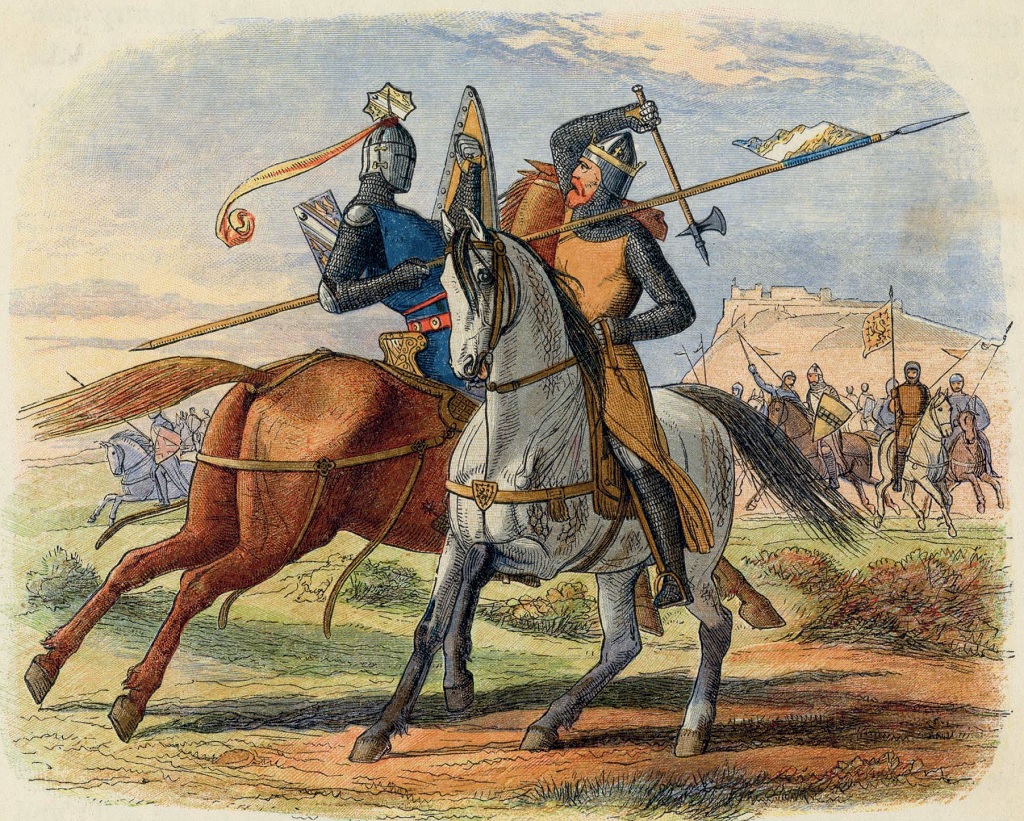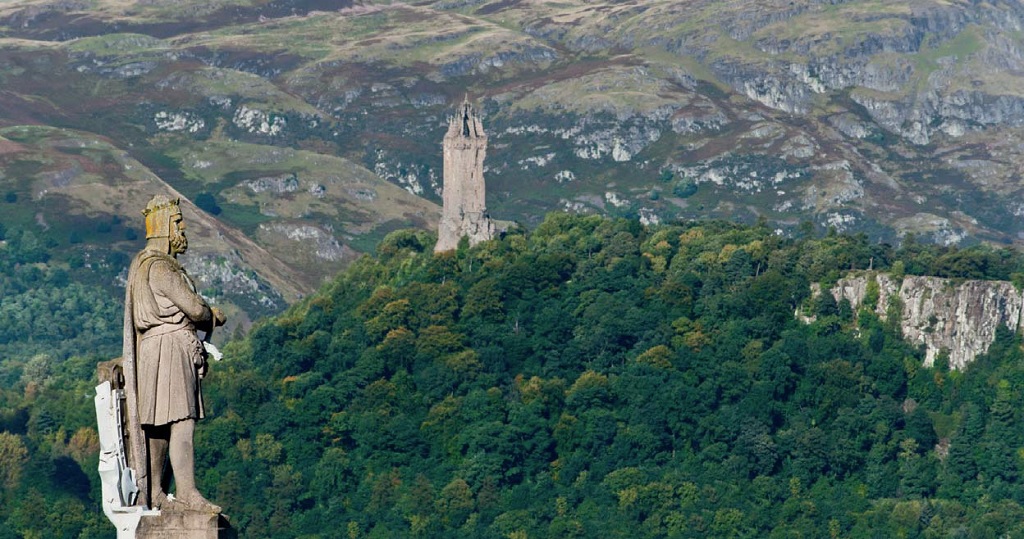Rather than overcoming a far larger English force, a controversial theory says Robert the Bruce fought far from the accepted battlefield and won by a cunning plan that didn’t involve cavalry or the wee folk.
‘Wha for Scotland’s King and law, Freedom’s sword will proudly draw, Freeman stand or Freeman fa’, Let him on wie me.’
So Scotland’s greatest poet, Robert Burns, paraphrased the address of one of its greatest kings, Robert the Bruce, to his army before the Battle of Bannockburn on 24 June, 1314.
More than 700 years after the single most important conflict in Scotland’s history – which destroyed English attempts to complete the conquest of their northern neighbours – another Scot is fighting his own personal battle to have his books recognised as the definitive works on the subject.
He does so to establish the truth and to ensure that no more building takes place on what remains of the battlefield.
But since his first book on the subject, Bannockburn Revealed, came out in 2000, William Scott has found it extremely difficult to get the Scottish historical academic hierarchy to accept his proofs. Yet the evidence is overwhelmingly in his favour, and he has shown that the Scots won as a result of a marvellous plan, brilliantly executed.
Scott, from the Isle of Bute, has spent two decades researching the subject, including all known documents written as closely as possible to the time of the battle, and also the ground itself. A mathematician and philosopher, he has brought a uniquely scientific approach to his work. He has come up with demonstrable proofs as to where, how and why the Scots managed to win.
He has shown that some 15-20,000 Scots – not the vastly outnumbered force many in the past believed – defeated an English force numbering around 23,500, because they had a superb strategy. Like the best plans, it was remarkably simple.
The governor of the last major stronghold in Scotland held in English hands, Philip de Mowbray, had agreed that he would relinquish Stirling Castle to the Scots if the siege by Robert the Bruce’s brother, Edward, in the summer of 1313, were not relieved within a year. This gave the Scots the time they needed to prepare.
So how did the Bruce defeat a mighty English army, far superior technologically to his own?

Scott’s proofs establish at last where the battle took place, in the Carse of Balquhidderock and not the Dryfield. He also refutes accepted truths, such as the use of Scottish cavalry and the late arrival of a Scottish army of camp followers – the ‘wee folk’ of legend – from Gillies Hill.
The Dryfield, which the Scots occupied on day one, was a superb natural fortress.
If Bruce held it, notably defending the bottleneck at Milton Ford where the road crossed from Falkirk to Stirling, and which can still be seen today, he would force the English into the adjacent lower ground of Balquhidderock Carse to bed down for the night. It was known they had camped there on previous expeditions, it being flat ground with a plentiful supply of water from natural pools and the bounding streams.
The Scots did just that, manoeuvring the English to cross into the Carse, some 50-60 feet below their position. English first-hand sources reveal that once there, they settled down out of arrow range for the night in confident mood, the horses saddled and ready, but the men indulging in merriment.
But, before dawn on the second day, Bruce and his men did the totally unexpected – they took the fight to their enemy. On foot with their king leading, the Scots descended the steep slopes of Balquhidderock Wood onto the Carse, advancing over 400 yards in a matter of minutes.
The English, hemmed in between the Pelstream and the Bannockburn, had been taken totally by surprise. A hastily organised English cavalry charge lacked the momentum to break the closely packed ranks of the Scottish pikemen who had closed the narrowest, halfmile, gap between the two burns, and Bruce himself killed English knight Henry De Bohun who was in the vanguard of the charge. The much vaunted English/Welsh archers, behind their own cavalry, could not see their targets and were eventually ordered to stop firing as they were hitting their own horsemen.
An almighty crush developed as the English cavalry could not retreat due to the thousands of their own infantry and archers assembled behind them. The battle was virtually over as soon as it had begun. The Scots slowly, but steadily, advanced over the bodies of some of the finest knights in Europe.
Panic ensued and King Edward II was led from the field by his personal bodyguard of 500 knights. It was a catastrophic defeat, but it was not a rout: contrary to what has become accepted fact, many English soldiers kept their discipline and retreated in good order.

Despite believing he has proved his point, Scott has struggled to get his work accepted despite his belief ‘that an outsider like me, trained in maths, science and philosophy, is far better able to deal with this because I don’t have any prejudices.’
He gave up his career in education to become an author in 1991. His first novel, The Bannockburn Years, was highly acclaimed, winning the Constable Trophy in 1997. In writing it, Scott learned ‘that the historical community believed things about Bannockburn that weren’t true. I then decided that maybe I had a duty to discover the truth because I knew enough already to see that they were wrong.
‘In 1998 I devoted myself to clearing up this mess. The first thing to do was get all the available sources and get them all translated. That took a lot of doing, but was fundamental. I realised there were sources like Baker and Trokelowe that had never been translated [from Latin]. I also realised that what I was discovering was not going to be accepted; that I was going to have to prove things.’
Scott’s assertions that there was no Scottish cavalry at the main battle is particularly controversial. ‘There are 21 statements in nine separate English sources, all written in 1314, more or less, stating that there were no Scottish cavalry,’ he says. ‘The only person saying there was, was John Barbour [a Scot], and he was writing over 60 years after the event. The other nine sources were all written far nearer the battle and say the Scots fought on foot.’
Scott has undertaken an incredible amount of foot-slogging over the ground itself, taking 10 years for Bannockburn Revealed. This has subsequently been upgraded in his latest book, Bannockburn Proved, with much improved maps.
Already there are houses on part of the battlefield and Scott believes it would be a national disgrace if any further building were permitted. He undoubtedly has ruffled more than a few feathers, but then his job is not that of a diplomat. A passage of the Declaration of Arbroath, written six years after Bannockburn, states: ‘It is, in truth, not for glory, nor riches, nor honours that we fight, but for freedom.’
In Scott’s case his fight is for the truth.
(This feature was originally published in 2011)
TAGS

